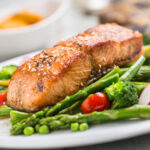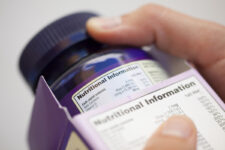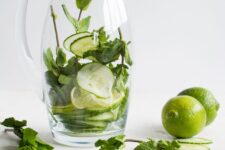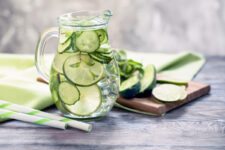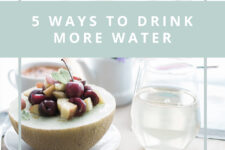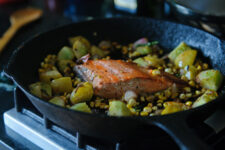Vitamin D is a nutrient of concern worldwide because it’s essential for bone health but isn’t found in many foods naturally. Many people wonder if vitamin D is fat-soluble or water-soluble, as this impacts how the vitamin is stored and absorbed in the body.
Keep reading to learn more about the properties of vitamin D and how to get enough of it.
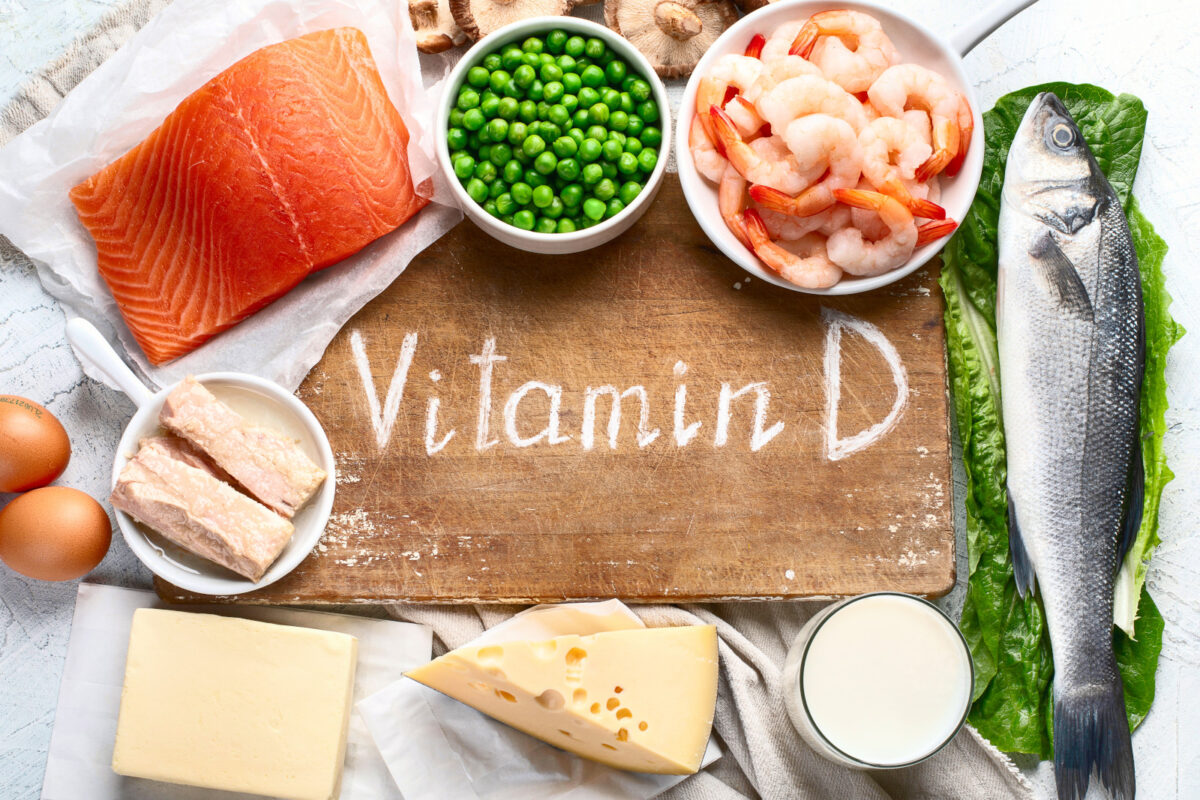
What is Vitamin D?
Vitamin D is an essential fat-soluble vitamin primarily responsible for helping bone mineralization and growth. It has many other roles besides bone health, such as assisting with normal immune and muscle function and decreasing inflammation in the body (1).
Vitamin D is naturally found in some foods, but since these are limited, it’s added to other foods during processing (known as fortification) (1).
- Cod liver oil.
- Fatty fish such as salmon, tuna, and sardines.
- Egg yolks.
- Beef liver.
- Orange juice (fortified).
- Cow’s milk and certain plant-based milks (fortified).
- Mushrooms (only those processed under UV light).
- Certain breakfast cereals (fortified).
You can also get vitamin D through exposure to sunlight, which is why it’s sometimes referred to as the “sunshine vitamin.” When exposed to UV radiation, the skin creates a precursor to vitamin D, which is later converted to the active form of vitamin D for use in the body (1).
Vitamin D Deficiency
Since it can be challenging to get enough vitamin D from food, it’s common for people to have a deficiency. Around six percent of Americans have a vitamin D deficiency, which health care providers diagnose when serum concentrations of 25-Hydroxyvitamin D [25(OH)D] are less than 30 nanomoles per liter (nmol/L) (1, 2).
Though not technically considered a vitamin D deficiency, research shows that 25(OH)D levels under 50 nmol/L are inadequate for proper bone health. Approximately 24% of Americans fall under this category of suboptimal vitamin D status (1, 2).
Certain people are at higher risk of developing a vitamin D deficiency, including infants, children, and people with (1):
- Dark skin tones.
- Minimal sun exposure.
- Malabsorption syndromes.
- Old age.
- Obesity.
In children, vitamin D deficiency causes a condition called rickets. It results in soft bones that may appear curved, which can be painful and result in developmental delays. Rickets can also impact dental health (1).
In adults, osteomalacia occurs as a result of vitamin D deficiency. It impacts the mineralization of bones, weakening them and causing similar signs and symptoms to rickets (1).
Is Vitamin D Water Soluble?
Vitamin D (also referred to as “calciferol”) is considered a fat-soluble vitamin because it must be packaged into fat globules to be absorbed by the small intestine (3).
Vitamin D isn’t water-soluble because it doesn’t mix well with water to be absorbed and transported in the body.
This is important to understand because fat-soluble vitamins like vitamin D can’t be absorbed without the presence of dietary fat in the small intestine, meaning you must consume food containing fat when eating foods rich in vitamin D or taking a vitamin D supplement.
Understanding Water Solubility of Vitamins
All vitamins are either water-soluble or fat-soluble, depending on how the body absorbs and stores them. Vitamin B complex and vitamin C are water-soluble vitamins, while vitamins A, D, E, and K are fat-soluble (3, 4).
Like vitamin D, all the fat-soluble vitamins are absorbed from the small intestine into the bloodstream through fat globules. Any excess is then stored in the body fat for long periods of time (3).
On the other hand, water-soluble vitamins mix well with water and are readily absorbed from the small intestine in this way. They can’t be stored easily, so any extra vitamins are eliminated through the urine (4).
How to Make Sure You Get Enough Vitamin D
There are three ways to get vitamin D: food, sunlight exposure, and supplements. The recommended daily allowance of vitamin D for adults is 15 micrograms or 600 IU per day (1).
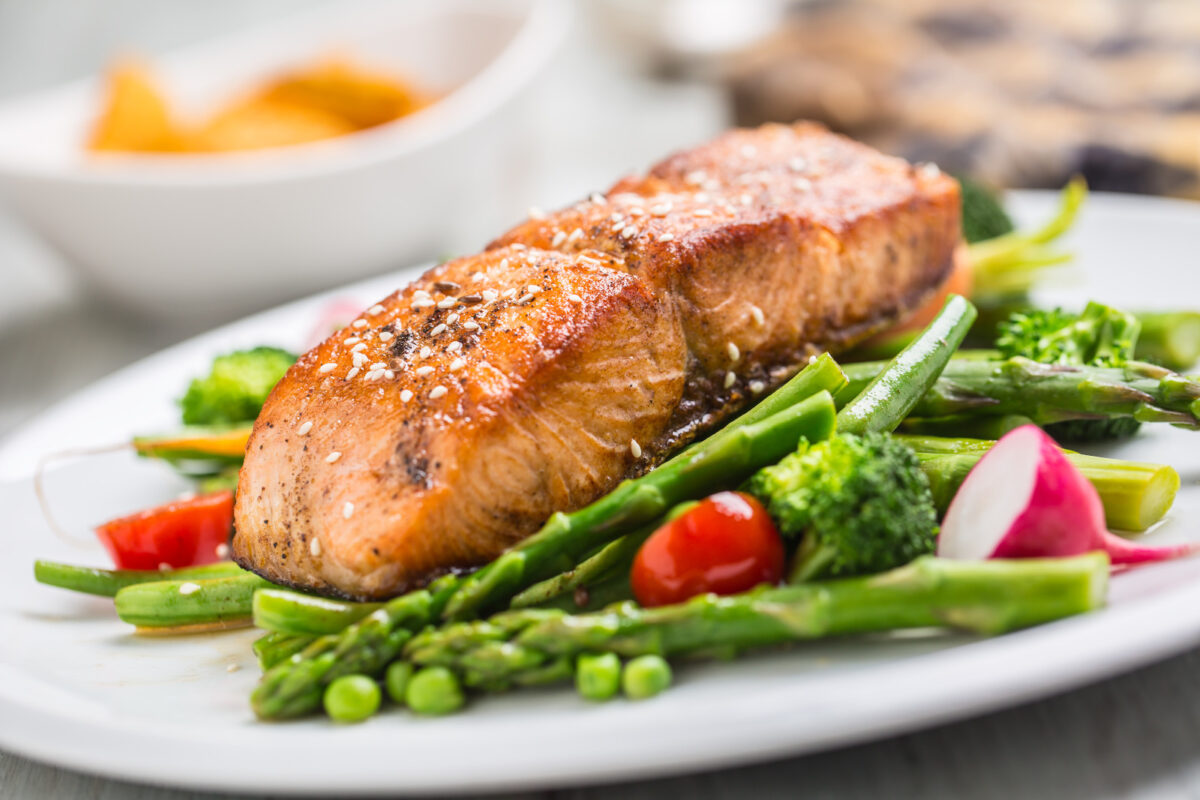
Food
If it’s within your preference, incorporate fatty fish like salmon a few times per week. You can also add fortified foods like cow’s milk, certain breakfast cereals, or orange juice into your diet, which may be more realistic to consume daily (1).
Remember that food and supplement sources of vitamin D are best absorbed when you eat something containing dietary fat.
In the United States, providing vitamin D-fortified formula to infants or giving a vitamin D supplement to breastfed babies is recommended because deficiency is common in this population (1).
Sunlight
You may wonder how much vitamin D per day you can get from sun exposure, but there is no clear answer to this question.
Environmental factors like the season, weather, and time of day impact the level of sun exposure, while things like sunscreen use or having dark skin can make it hard for your skin to create vitamin D (1).
Experts recommend getting between five and thirty minutes of sun exposure between 10 a.m. and 4 p.m. daily for optimal vitamin D status.
However, UV exposure is a well-known risk factor for skin cancer, and daily use of sunscreen with at least 15 SPF is highly encouraged. Research shows that sunscreen above an SPF of eight blocks the UV rays that create vitamin D in the skin (1).
For these reasons, it’s best to avoid relying on sunlight for vitamin D and instead focus on food sources and supplements.
Supplements
If you feel unsure that you have adequate vitamin D levels, you can request a vitamin D test next time you get bloodwork done with your doctor.
Especially if you have one of the risk factors for vitamin D deficiency, like dark skin tone or low sun exposure, a simple screening can help you avoid serious side effects impacting your bone health.
Your doctor may recommend you take vitamin D supplements depending on your blood test result. The best way to take vitamin D supplements is with a meal containing fat, which maximizes absorption.
It’s important to avoid taking too much vitamin D because this can result in toxicity.
How Much Vitamin D is Safe?
Since excess vitamin D can be stored in body fat for long periods, there’s a higher risk of toxicity than water-soluble vitamins (1).
Most cases of vitamin D toxicity result from over-supplementation and, more rarely, excessive use of tanning beds. It’s uncommon to get too much vitamin D from food or sunlight (1).
The safe upper limit for vitamin D in adults is 4,000 international units (IU) daily, but toxicity does not usually occur at intakes less than 10,000 IU daily.
Experts recommend serum levels of 25(OH)D should be less than 75 ng/mL to avoid possible adverse health effects (1).
Vitamin D Toxicity
Consuming excessive amounts of vitamin D, typically in the supplement form, can increase calcium absorption, resulting in elevated calcium levels. This can cause symptoms like:
- Nausea and vomiting.
- Muscle pain and weakness.
- Poor appetite.
- Dehydration.
- Kidney stones.
It’s always best to talk with your doctor before starting any new supplements, including vitamin D, to ensure the dose is healthy for you.
Easy Broiled Salmon Recipe
Ingredients
- 1 tbsp olive oil extra virgin
- 1 tsp lemon rind
- 1 tbsp lemon juice
- 1 tsp Worcestershire sauce
- 24 oz salmon 4 center-cut filets about 6 oz. each
- 1/4 tsp salt
- 1/4 tsp black pepper
Instructions
- Pat the salmon fillets dry with paper towels. Set the salmon in a shallow rimmed dish.
- Combine olive oil, lemon rind, lemon juice and Worcestershire sauce in a small bowl. Pour the mixture over the salmon, turning to make sure it's coated fully on all sides. Let the salmon rest in the dish, skin side up, for 15 minutes.
- Place an oven rack about 6 inches from the heat source. Set oven to broil and allow to preheat. Place fillets skin side down on a foil-lined baking sheet. Sprinkle with salt and pepper. Broil 8 to 10 minutes. Remove fillets from foil using a spatula.

